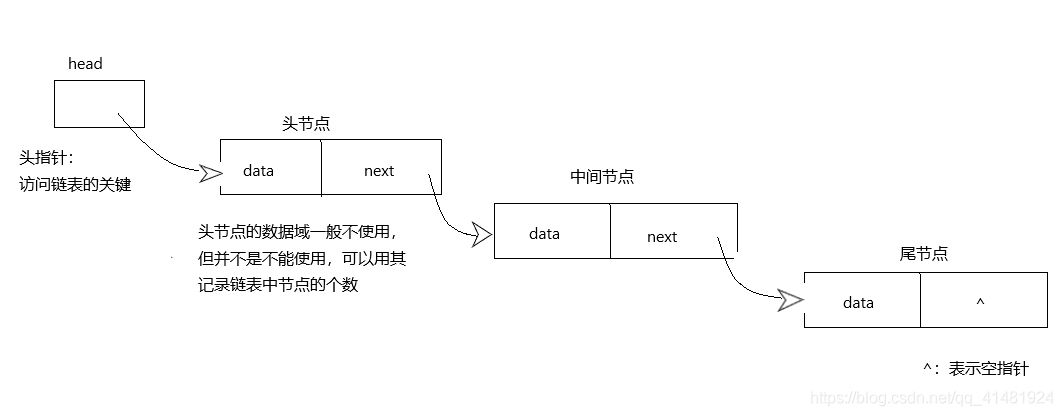【递归深度探讨】:Python单链表反转,递归限制与高效解决方案
发布时间: 2024-09-11 19:12:51 阅读量: 52 订阅数: 23 


# 1. 递归原理与Python基础
## 1.1 递归的魔力与必要性
递归是一种在解决问题时不断将问题分解为相似子问题的编程技术,它允许一个函数调用自身。在某些复杂的问题中,递归能够提供简洁、直观的解决方案。然而,这种技术并非没有缺点,其中最大的挑战之一在于递归的深度限制和效率问题。
## 1.2 Python编程语言简介
Python因其简洁的语法和强大的功能库,成为许多开发者首选的编程语言之一。在Python中,实现递归非常简单,但需要注意递归深度限制(`sys.setrecursionlimit()`)以避免栈溢出错误。Python的动态类型系统也为我们提供了更多的灵活性。
## 1.3 Python中的递归实现
在Python中实现递归,只需要定义一个包含递归调用的函数即可。下面是一个简单的递归函数示例,用于计算阶乘:
```python
def factorial(n):
if n == 0:
return 1
else:
return n * factorial(n-1)
print(factorial(5)) # 输出 120
```
在这个例子中,`factorial` 函数通过不断地调用自身来计算结果。递归调用是在`else`子句中完成的,其中`n`的值逐步减小,直到达到基本情况(`n == 0`)。
递归函数的设计和理解是后续章节中链表反转以及其他数据结构递归操作的基础。在后续的文章中,我们将通过递归反转单链表的实例来深入探讨递归的原理及其在数据结构中的应用。
# 2. 单链表数据结构详解
## 2.1 单链表的定义和特点
### 2.1.1 节点与指针的概念
在单链表中,每个数据元素都由一个节点来表示。节点是链表存储数据的基本单位,通常包含两个部分:一个是存储数据的域,另一个是指向下一个节点的指针。指针(Pointer)在计算机科学中是一个变量,它存储了另一个变量的内存地址。在单链表中,指针的作用是连接各个节点,形成一个链式结构。
单链表节点的定义通常在代码中表现为一个类(在Python中是类,而在其他一些语言中可能是结构体或对象)。这个类具有两个基本的属性:一个是存储数据的字段(例如,在Python中可能是name和value这样的变量),另一个是next指针,指向下一个节点。
下面是一个简单的Python类,用于表示单链表的节点:
```python
class Node:
def __init__(self, data=None):
self.data = data # 存储数据
self.next = None # 指向下一个节点的指针
```
在这个类中,`data`属性用于存储节点的数据,`next`属性是一个指向Node对象的指针,初始时指向`None`,意味着它不指向任何节点。
### 2.1.2 单链表的基本操作
单链表支持一系列基本操作,包括插入、删除、搜索和遍历。这些操作允许我们对链表进行各种数据结构任务。
- **插入操作**:将一个新节点添加到链表中的特定位置。插入可以发生在链表的开始(头插入)、中间某个位置(在某个节点之后)或链表的末尾(尾插入)。
- **删除操作**:从链表中移除一个节点。这通常涉及到调整要删除节点前驱节点的next指针,使其指向要删除节点的后继节点,从而实现删除。
- **搜索操作**:根据某个给定的值查找链表中的节点。这通常需要从头节点开始遍历链表,直到找到匹配的节点或遍历完整个链表。
- **遍历操作**:访问链表中的每一个节点,并对每个节点执行某些操作。这是链表中常见的操作,例如打印链表中的所有元素。
这些操作的实现都需要我们理解和操作节点的指针域。例如,下面是一个简单的插入操作的实现,它将一个新节点插入到链表的头部:
```python
def insert_head(head, data):
new_node = Node(data)
new_node.next = head
return new_node
```
在这个函数中,我们创建了一个新的节点,并将其`next`指针设置为当前的头节点。然后返回新创建的节点作为新的头节点。
## 2.2 Python中的链表实现
### 2.2.1 构建节点类Node
在Python中实现单链表的基础是构建一个节点类Node,这个类的定义已经在前面的章节中给出了。在构建单链表的过程中,Node类将作为链表的基础单元,通过在Node类中添加各种方法可以实现链表的不同操作。
### 2.2.2 创建和初始化链表类LinkedList
链表类LinkedList是单链表的容器,它维护链表的头节点,并提供了一系列方法来操作链表。除了插入和删除等基础操作外,链表类可能还会包含方法来查找特定节点、获取链表长度等。
下面是一个简单的LinkedList类的定义,它初始化为空链表,并提供了插入和打印链表的方法:
```python
class LinkedList:
def __init__(self):
self.head = None
def insert(self, data):
self.head = insert_head(self.head, data)
def print_list(self):
current = self.head
while current:
print(current.data, end=" ")
current = current.next
print()
```
在这里,LinkedList类包含了一个头节点`head`和两个方法:`insert`用于在链表头部插入新节点,`print_list`用于打印链表中的所有数据。
### 2.2.3 链表的插入和删除操作
链表的插入和删除操作涉及到节点的指针管理。在单链表中,这些操作通常从链表的头节点开始,根据需要找到特定的节点位置,然后进行指针的更新。
#### 插入操作
插入操作分为三种类型:头插法、尾插法和在指定位置插入。头插法已在前文中展示。尾插法则是创建一个新节点并将其添加到链表末尾。在指定位置插入则需要遍历链表直到找到特定位置的前一个节点,然后更新其next指针。
下面是一个尾插法的示例:
```python
def insert_tail(self, data):
new_node = Node(data)
if self.head is None:
self.head = new_node
return
last_node = self.head
while last_node.next:
last_node = last_node.next
last_node.next = new_node
```
在这个函数中,我们首先检查链表是否为空,如果是,就直接将新节点设置为头节点。如果不是空链表,我们就遍历到链表的末尾,然后将最后一个节点的next指针指向新创建的节点。
#### 删除操作
删除操作需要找到要删除的节点的前一个节点,然后将其next指针更新为指向待删除节点的下一个节点。在Python的LinkedList类中,一个简单的删除节点的函数可能如下所示:
```python
def delete(self, data):
current = self.head
prev = None
while current:
if current.data == data:
if prev:
prev.next = current.next
else:
self.head = current.next
return True
prev = current
current = current.next
return False
```
在这个函数中,我们从头节点开始遍历链表,寻找数据域等于data的节点。如果找到了,我们就将该节点的前一个节点的next指针指向要删除节点的下一个节点,从而实现删除。如果要删除的是头节点,我们还需要将头节点更新为下一个节点。
## 小结
本章节从单链表的定义和特点出发,详细介绍了节点与指针的概念,以及单链表的基本操作。接着,我们探讨了在Python中如何实现单链表的节点类Node和链表类LinkedList,并分别演示了插入和删除等核心操作的实现。通过这些操作,我们能够看到节点的指针管理是链表实现的关键,也是链表操作的核心逻辑所在。
# 3. 递归反转单链表的理论基础
## 3.1 递归算法的原理
### 3.1.1 递归的定义和调用机制
递归算法是一种在解决问题时自我调用的方法。在计算机科学中,一个递归函数会直接或间接地调用自身以解决问题。递归函数由两部分组成:基本情况(base case)和递归情况(recursive case)。
- 基本情况是递归停止的条件,它定义了最简单的问题实例,可以直接解决。
- 递归情况则将问题分解为更小的子问题,并调用自身来解决这些子问题。
递归调用机制的核心是将大问题分解为小问题,直到达到基本情况。在递归函数的每次调用中,都会有一些状态保存在调用栈(call stack)中,这包括了局部变量和返回地址。当基本情况满足时,递归开始“展
0
0





